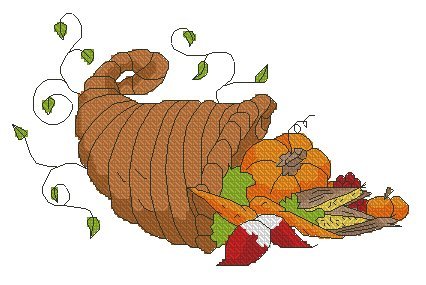There are multiple fabric design techniques available in print on demand, but if you’re looking for intricate imagery or a high-end look with a tactile feel, the two stand-out options are screen printing and embroidery.
Screen printing – ink press method for large or intricately detailed artwork.
Embroidery – thread-stitched method for high-value branded artwork.
Designing based on a specific printing technique will give you an idea of how to develop a long-lasting and cost-effective store. In this article, we’ll compare the differences between screen printing and embroidery.
What Is Screen Printing?
Screen printing is a popular fabric printing technique that can produce vivid colors at an affordable cost. The ink is infused into the fabric surface, giving the design a refined, tactile quality with more intense hues than its digital printing counterparts.
Screen-printed designs use a prepared stencil screen outline in the production process:
- The design is printed on a transparent acetate film. The printer selects a mesh screen appropriate for the fabric type and design complexity.
- The mesh is coated with a light-reactive emulsion. The film is then placed on the mesh and exposed to bright light.
- Bright light hardens the emulsion where the design is not present. The remaining liquid is cleared off, creating a stencil outline on the mesh screen.
- The screen is placed on a printing press above the fabric and lowered to make contact for the inking process.
- The ink is pushed through the mesh outline, imprinting on the fabric surface. The process is repeated for each fabric item, dried, and checked for quality assurance.
When Is Screen Printing Used?
Screen-printed designs are great for light fabrics and delicate surfaces such as cotton t-shirts, sports bags, and sweatshirts.
Thicker fabrics or synthetic blends may be used in screen printing, but the design is prone to peel and crack if not treated properly, i.e., with moisture-wicking polyester. Use screen print to create intricate designs with shadows, gradient effects, and typography.
Screen printing captures vivid colors and works great on both dark and light surfaces. For mixed hues and multi-colored designs, each tone requires an individual mesh layer that must be pressed separately. This extra complexity can add up to higher expenses.
The screen printing technique is efficient for bulk orders and repeat products since manufacturers can use the same mesh template to add your design to multiple garments.
What Is Embroidery?

Embroidery is sewn with stitches. Manufacturers operate embroidery machines or work by hand for a bespoke look. Embroidery is most often used to decorate logos and small details that give the product a higher perceived value, such as on uniforms.
Working with embroidery designs needs strict rules in order to make the design work in a stitched medium. Check out our embroidery design requirements to see specific design do’s and don’ts.
When Is Embroidery Used?
Embroidery is used for flagship items representing a brand, specifically designed to act as a signature piece of authenticity. Retailers like Nike and Ralph Lauren have popularized the idea that embroidery stands for high-end products.
Choose embroidery on thicker fabrics and lighter pigments. It’s best for hats, jackets, polos, and button-downs, taking special care to keep the threading durable. Most machine embroidery manufacturers stitch with polyester or rayon for added longevity. The design retains form and is much more long-lasting than printed inks.
Work with simplified designs to maintain consistency and not lose any detail. Colorful options are possible with embroidery, but exact thread matches might not exist for some digital colors. We recommend sticking to the base 16 colors for embroidery to limit additional expenses.
Screen printing and embroidery are not the same, but these two methods share similar aspects in color and durability. Depending on your budget, target audience, design, and fabric type, one option should be better than the other.
Make It Happen Today!
Embroidery vs. Screen Printing

With the added value and durability, is embroidery better than screen printing?
Not every design needs to be stitched, and some will look better printed. You should choose between screen printing and embroidery carefully. Here, we compare screen printing vs embroidery in seven categories:
| Screen printing | Embroidery | |
|---|---|---|
| Quality | Vivid high-quality prints | Unique tactile stitching |
| Design complexity | Possible to create more complex designs | Unparalleled durability with machine threaded sewing |
| Durability | One of the most durable options for fabric longevity Can flake and fade over an extended time |
Limited to smaller, simpler designs |
| Sustainability | Excess waste production makes this a less eco-friendly option, yet there are sustainable manufacturers | Organic cotton threads are biodegradable; polyester options are less eco-friendly, but produce limited waste |
| Minimum order | Minimum order requirement are usually from 5 to 100 items | No minimum order requirements |
| Production time | A quick production time after the stencil outline is set up | More complex process will slightly extend production time |
| Average cost | Best for large orders but costly for one-time prints Extra colors can increase expenses |
Great for smaller on-demand orders Extra colors can increase expenses |
| Quality | |
|---|---|
| Screen printing | Vivid high-quality prints |
| Embroidery | Unique tactile stitching |
| Durability | |
| Screen printing | One of the most durable options for fabric longevity Can flake and fade over an extended time |
| Embroidery | Unparalleled durability with machine threaded sewing |
| Design complexity | |
| Screen printing | Possible to create more complex designs |
| Embroidery | Limited to smaller, simpler designs |
| Sustainability | |
| Screen printing | Excess waste production makes this a less eco-friendly option, yet there are sustainable manufacturers |
| Embroidery | Organic cotton threads are biodegradable; polyester options are less eco-friendly, but produce limited waste |
| Minimum order | |
| Screen printing | Minimum order requirement are usually from 5 to 100 items |
| Embroidery | No minimum order requirements |
| Production time | |
| Screen printing | A quick production time after the stencil outline is set up |
| Embroidery | More complex process will slightly extend production time |
| Average cost | |
| Screen printing | Best for large orders but costly for one-time prints Extra colors can increase expenses |
| Embroidery | Great for smaller on-demand orders Extra colors can increase expenses |
How to Digitize a Logo for Embroidery?

Another aspect of the difference between screen printing and embroidery is that the latter requires a lot more work to develop. Achieving a sewn and threaded design requires translating a digital image into one the embroidery machine can recognize.
Your logo design needs to go through a digitization process. This isn’t as simple as uploading a regular image file and converting it to a unique file format, since stitch type, density, and thread color need to be manually defined.
If you’re not an experienced embroidery machine user, learning to use digitization software can be difficult and pricey. We recommend using a print-on-demand service like Printify that can convert your file to meet specific embroidery standards.
If you’re willing to use embroidery digitizing software, you must follow a set of steps to get the file ready:
- Upload image file
Upload your image file (JPG, PNG) to the software, making sure to crop out any white backgrounds and negative space.
- Set design size, stitch type, and direction
Set embroidering dimensions – this represents the exact size for when the logo is on the garment.
Lock the picture in place and select a stitch type depending on the manufacturer’s available options. Straight stitch, Satin stitch, and Fill stitch are the three most common options for embroidery.
Defining stitch direction will determine how each thread is sewn, allowing you to experiment with the texture and contour of the logo design.
- Set thread colors
Select thread colors from the available options, making sure to translate your digital colors into the 16 standard thread colors most manufacturers use.
- Convert design to a specific embroidery file type
Depending on the embroidery machine used, your file will have a unique file extension. Make sure to determine the correct file format for the embroidery machine you’ll be using. Extensions include DST, EXP, JEF, KWK, DSB, and TAP file formats.
For specific details on digitizing a file in preparation for embroidering, you will need to discover which software works best for you.
What About DTG?

While we’re on the subject of comparing screen printing and embroidery, DTG or direct-to-garment printing is an alternative to screen printing, but, as with all printing methods, each has its pros and cons that we’ve fully detailed in our DTG and screen printing comparison article.
DTG printing has an extremely detailed print quality made with sustainable manufacturing and is best for small orders with no minimum order requirements.
Direct-to-garment printing stands out with its all-over-print (AOP) quality, which allows for wrap-around designs. In our all-over-print custom shirt guide, we cover the AOP essentials for making personalized t-shirts.
Your Embroidery Options With Printify
Printify does not currently offer screen printing options. We do, however, have a growing catalog of embroidery items that you can upload and customize using our built-in Mockup Generator:
Our unisex hoodies are a classic fit that reinvents the stingy embroidery cliche of polo shirts and hats, capable of holding a good contour with a thick blend of fabric cotton and polyester. This is a great spring or fall choice with eight unique fabric colors.
Despite being perfect for embroidery designs, this women’s polo shirt has an extra-light fabric with a tagless and clean look. The short-sleeved design keeps it casual and a great fit for summer holidays.
One of the most recognizable embroidery product types, our unisex hat is a solid 100% cotton twill with an adjustable Velcro® strap. The reinforced stitching and fused hard buckram front make this an item that will last for years.
To begin designing a full catalog for your store with no upfront costs and over 600 products to choose from, join the Printify drop shipping service.
Conclusion
Both embroidery and screen printing are excellent options for durable and high-quality fabric designs that provide an attractive, tactile feel for every product. These options are limited in color but maximize intricacy and design quality.
Screen printing is a versatile flat design option – perfect for bulk orders. It does, however, have the potential to fade and lose quality over time.
Choose embroidery if you want more complexity than printing. The added difficulty and unique manufacturing make this a sought-after and high-value design choice.
Try your hand at screen printing and embroidery today.
Make It Happen Today!
The post Screen Printing and Embroidery: Similar, Yet Different appeared first on Printify.







